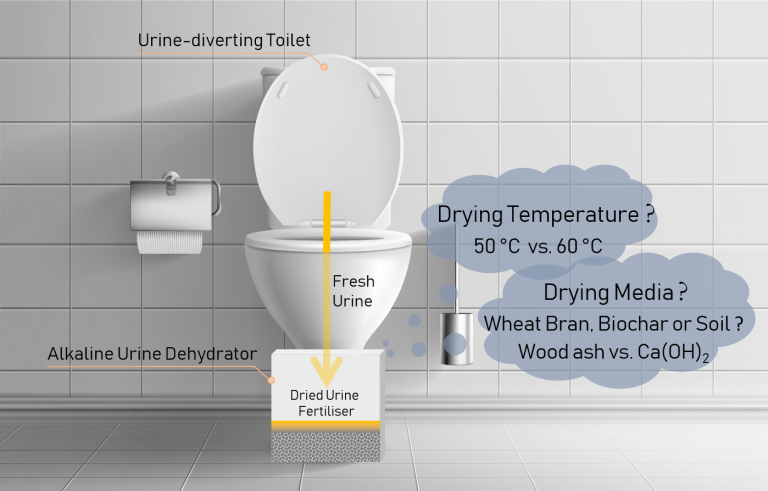In a study recently published in Science of the Total Environment, we present results from a study that investigated drying of fresh source-separated human urine in five different alkaline media (pH > 11) at elevated temperatures (50 and 60 °C) with minimal loss of urea, urine’s principal nitrogen compound. We found that it was possible to concentrate urine 48 times, yielding dry end-products with high fertiliser value: approximately, 10% N, 1% P, and 4% K. We monitored the physicochemical properties and the composition of various dehydration media to provide useful insights into their suitability for dehydrating urine. We demonstrated that it is possible to recover >90% nitrogen when treating fresh urine by alkaline dehydration by inhibiting the enzymatic hydrolysis of urea at elevated pH and minimising the chemical hydrolysis of urea with high urine dehydration rates.

We also demonstrated that end-products with different nutrient concentrations as well as different physicochemical properties can be prepared, by drying urine at different temperatures and by using different drying substrates. It may be possible to take advantage of this to prepare blended urine-based fertilisers suitable for specific end-use, e.g., for cereals, grass or fruits.
Treating human urine collected in new sanitation systems by alkaline dehydration to produce concentrated, nutrient-rich dry fertilisers is innovative and this study added to the development of the technology by providing useful insights into the selection of the dehydration media and dehydration temperature, and how these aspects influence the fertiliser end-product.
Read the full paper here:
P. Simha, C. Lalander, A. Nordin, B. Vinnerå, 2020. Alkaline dehydration of source-separated fresh human urine: Preliminary insights into using different dehydration temperature and media. Science of the Total Environment, Volume 733, September 2020, 139313. https://doi.org/10.1016/j.scitotenv.2020.139313
Contact: Prithvi Simha
